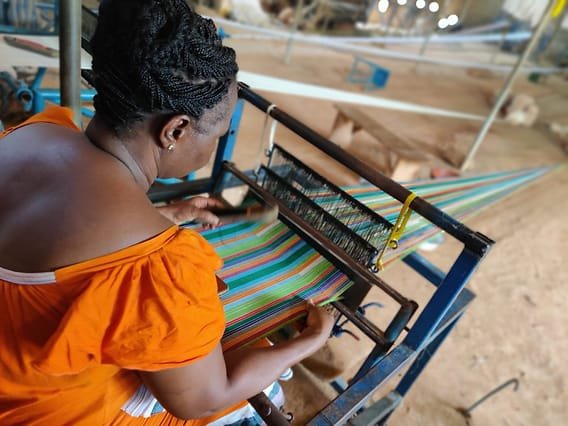
In many African cultures, a piece of cloth is never just a piece of cloth.
It is history.
It is a memory.
It is language, pride, and identity woven together—thread by thread.
From Nigeria’s Aso Oke to Ghana’s Kente, from the Shweshwe of South Africa to the Bògòlanfini of Mali, African traditional cloth weaving is more than a craft. It is a sacred heritage passed down from generation to generation. And though styles, dyes, and designs vary across tribes and regions, one thing remains the same: every fabric tells a story.
Weaving as a Language
In the olden days, people didn’t just wear clothes for fashion. The colors and patterns you wore spoke of who you were, your status, your tribe, your marital situation, and even your mood. In some communities, clothes were woven for specific ceremonies, births, weddings, funerals. You didn’t just wear a fabric; you wore your place in the world.
Even today, the symbolism persists. A Kente pattern might represent leadership or peace. An Aso Oke color might honor ancestry. A family’s unique pattern becomes a visual signature, unchanged, even as the world changes around them.
Redefining the Threads: Designers Shaping African Fashion
A new generation of visionary designers is confidently carrying tradition into modernity.

In Nigeria, Hertunba, founded by Florentina Agu, is more than a fashion brand, it is a cultural movement rooted in royal African femininity and pride. Hertunba does not merely design clothes; it tells stories through stitches, elevating African women as queens clothed in heritage. Florentina draws from traditional fabrics like Aso Oke and infuses them with contemporary silhouettes, creating pieces that feel regal yet relevant.

From South Africa, Laduma Ngxokolo, the founder of MaXhosa Africa, celebrates his Xhosa roots through knitwear that reimagines traditional beadwork patterns in vibrant, modern styles. His collections, worn by the likes of Beyoncé and featured on global runways, are not just garments, they are living archives of South African culture.

In Ghana, Christie Brown, founded by Aisha Ayensu, has made waves with designs that blend Kente and wax prints into high-fashion pieces adored both locally and internationally. Each piece is a dialogue between past and present, form and function, tradition and innovation.
Culture on the Global Stage
What makes these designers exceptional is their fearless embrace of African culture in a world that often asks creators to dilute it. Instead of conforming to Western aesthetics, they expand them. Each collection is unapologetically African, designed to be worn not only in Lagos or Johannesburg but in Paris, Milan, and New York.
By placing traditional fabrics and forms into international markets, these designers are reclaiming the narrative. African design is not a trend—it is the blueprint. And as more African designers join this renaissance, the world is beginning to notice.
Preserving While Progressing
Many of these brands collaborate with local artisans and weavers, ensuring that the knowledge and craftsmanship behind each cloth are preserved. This isn’t just fashion; it’s a form of economic and cultural empowerment. By investing in indigenous skills, these brands strengthen the communities they represent.
The designs are not simply beautiful. They are rooted. And in a globalized world that often forgets its soul, rootedness is power.
Wearing Our Stories
When a woman walks into a room dressed in Hertunba, MaXhosa, Christie Brown, or any of the other iconic African labels—she carries legacy. That’s what makes these brands perfect symbols of Africa’s woven legacies: they remind us that culture can evolve without erasing its origins.
So, the next time you see a richly woven African fabric, don’t just admire its beauty—ask about its story. Because in that cloth, generations are speaking. And through these iconic labels, they’re saying, “We are still here, and we are rising.”


